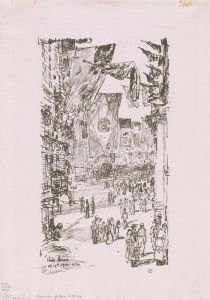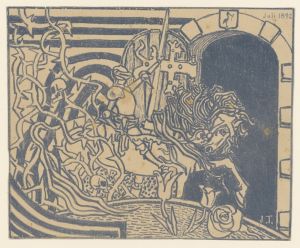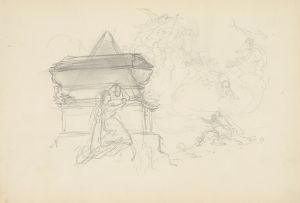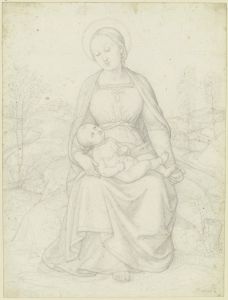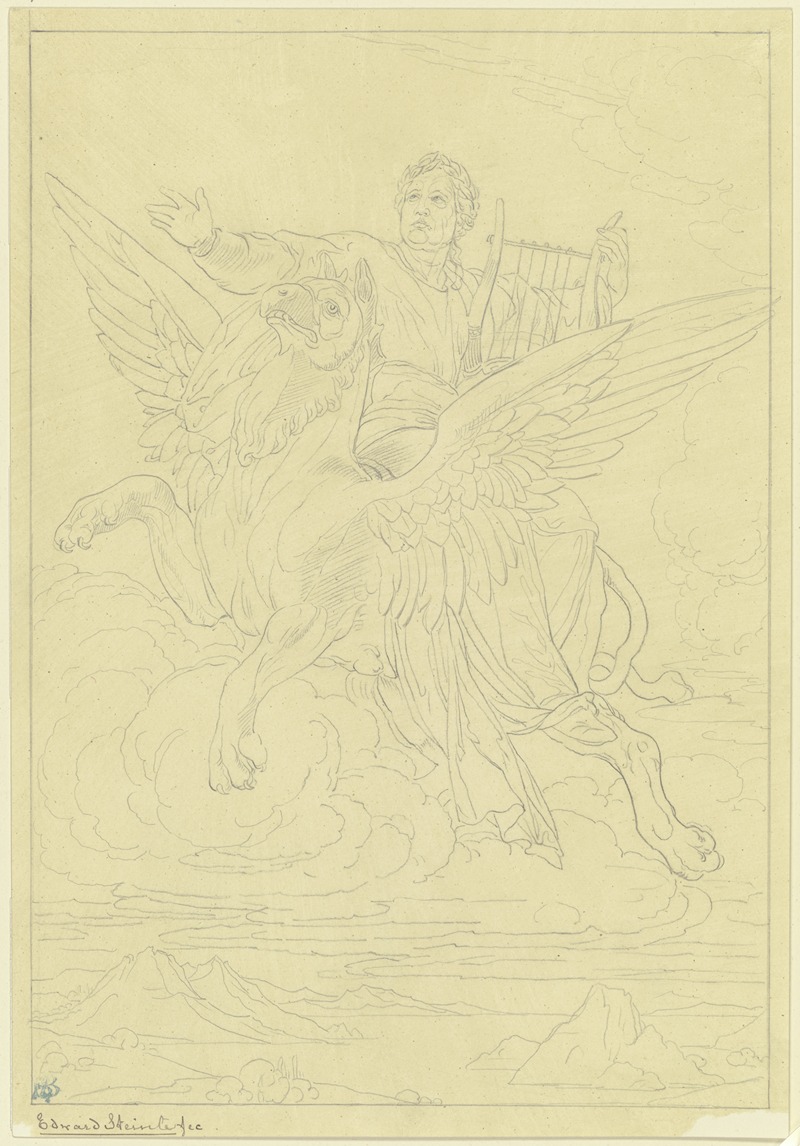
Goethes Apotheose
A hand-painted replica of Eduard von Steinle’s masterpiece Goethes Apotheose, meticulously crafted by professional artists to capture the true essence of the original. Each piece is created with museum-quality canvas and rare mineral pigments, carefully painted by experienced artists with delicate brushstrokes and rich, layered colors to perfectly recreate the texture of the original artwork. Unlike machine-printed reproductions, this hand-painted version brings the painting to life, infused with the artist’s emotions and skill in every stroke. Whether for personal collection or home decoration, it instantly elevates the artistic atmosphere of any space.
Eduard von Steinle's "Goethes Apotheose" is a notable artwork that captures the essence of Johann Wolfgang von Goethe's cultural and literary impact. Eduard von Steinle, a prominent German painter associated with the Nazarene movement, created this piece in the 19th century. The Nazarene movement, which emerged in the early 19th century, sought to revive honesty and spirituality in Christian art, drawing inspiration from the Italian Renaissance and early German art.
"Goethes Apotheose" is an allegorical painting that celebrates the life and works of Goethe, one of Germany's most revered literary figures. Goethe, a polymath, made significant contributions to literature, science, and philosophy, and his works remain influential to this day. Steinle's painting reflects the high regard in which Goethe was held by his contemporaries and subsequent generations.
The painting is characterized by its rich symbolism and detailed composition, typical of Steinle's style. It depicts Goethe being elevated to a divine status, surrounded by allegorical figures that represent various aspects of his genius and contributions. These figures often include muses or personifications of poetry, drama, and science, highlighting Goethe's diverse talents and interests.
Steinle's use of color and form in "Goethes Apotheose" is indicative of the Nazarene movement's emphasis on clarity and purity. The figures are rendered with a sense of grace and harmony, and the composition is carefully balanced to convey a sense of reverence and admiration. The painting not only serves as a tribute to Goethe but also reflects the broader cultural and intellectual milieu of 19th-century Germany, a period marked by a resurgence of interest in classical ideals and national identity.
"Goethes Apotheose" is housed in the Goethe Museum in Frankfurt, Germany, a testament to its enduring significance in German cultural history. The museum itself is dedicated to preserving and showcasing Goethe's legacy, offering visitors insights into his life and works through a diverse collection of artifacts, manuscripts, and artworks.
Eduard von Steinle's contribution to art through "Goethes Apotheose" is a reflection of his commitment to the Nazarene ideals and his ability to capture the spirit of his subjects with depth and sensitivity. The painting remains an important piece in the study of 19th-century German art, illustrating the intersection of art, literature, and national identity during this period.
In summary, "Goethes Apotheose" by Eduard von Steinle is a significant work that honors Johann Wolfgang von Goethe's legacy. Through its allegorical representation and adherence to the principles of the Nazarene movement, the painting offers a glimpse into the cultural reverence for Goethe and the artistic values of the time.





